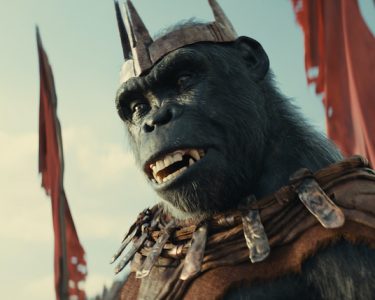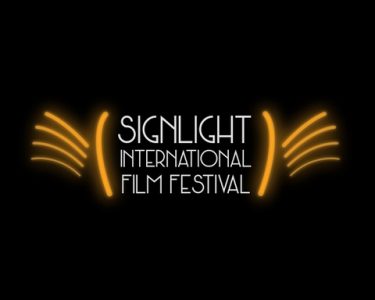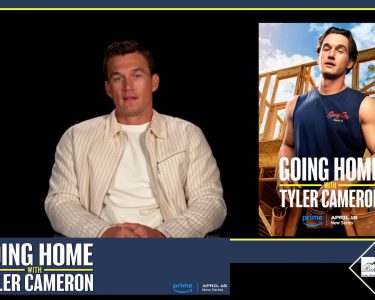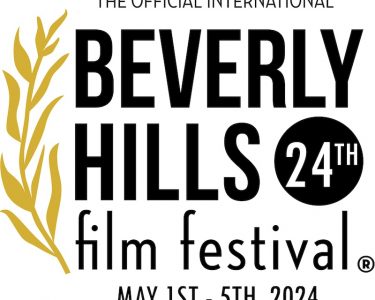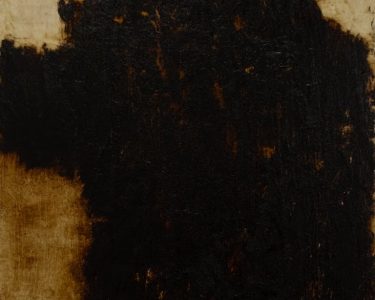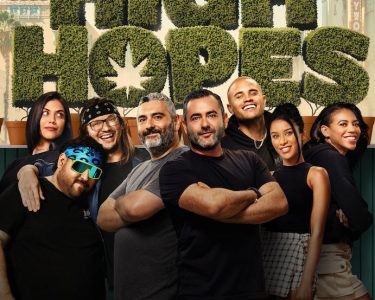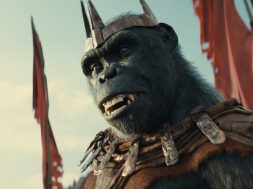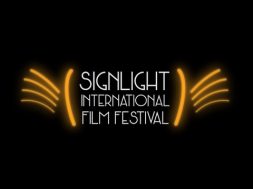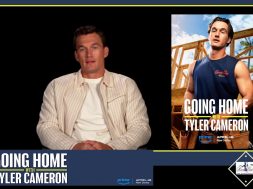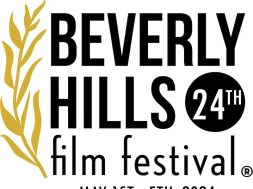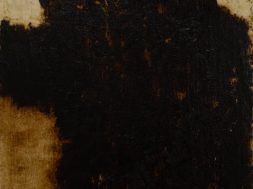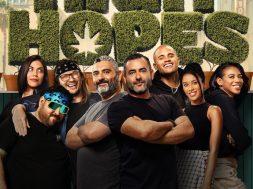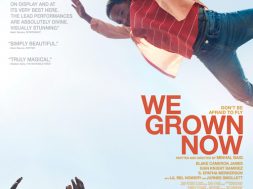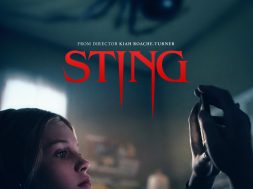‘A Woman’s Life’ In Select Theaters May 12th, 2017

This beautifully shot period film is indeed filled with layers of issues women still face in today’s society. As in many relationships we marry with a vision of who we want that person to be only to realize to late the consequences of our action. Though I am often reminded that in many areas of the world women are still facing horrific situations I take a little comfort in knowing that in some western countries women have more choices to leave or change the dynamics in their relationships.
But in the world of 19th Century Normandy life is not so simple for Jeanne(played by Judith Chemla) who has to deal with her husband infidelities and cheap ways. Adapted from the novel Une vie by Guy de Maupassant, Filmmaker Stéphane Brizé shows us the torment of living in a society with strict moral codes in regards to marriage.

An interview with Filmmaker Stéphane Brizé / Courtesty of KINO LORBER
Q: One year after The Measure of a Man, you’ve returned with a new film.
A: A Woman’s Life was written before The Measure of a Man, and was being financed while the latter was being written and produced. Although they ended up following one another, this project was born twenty years ago, after Florence Vignon, co-screenwriter of the film, introduced me to the novel.
Q: In this story of a young, 19th-century woman, we are very far from the world of long-term unemployment.
A: The context may be different, but I see a common thread running through all my films, including these last two. Jeanne and Thierry, the character played by Vincent Lindon, are both very idealistic regarding life. Thierry expresses his ideals by refusing his unbearable situation; Jeanne expresses hers through an extreme trust in humanity. Of course, the contexts are so far apart that the stories are naturally going to be different. But I see a connection between these characters, beyond their time period and social situation.
Q: Is there a connection between Jeanne and yourself?
A: Jeanne’s vision of the world resonates with me. Jeanne enters her so-called «adult» life without having to mourn over losing the paradise of her childhood – that moment in life when everything seems perfect. That moment where adults are the ones who know everything, who say you mustn’t lie and who, therefore, never lie – or, so we think. In this moment in life, you see things without a background. It’s a moment of perfection. As you get older, this ideal becomes more nuanced, to the point of turning into disenchantment. To prevent this, you have to acquire tools to protect yourself. You must understand the mechanisms connecting people and maintain the right amount of distance to avoid deep disillusion when witnessing the brutality of human relationships.
Q:Jeanne clearly lacks this distance.
A:Jeanne does not want to, can’t or doesn’t know how to develop her view of the world. That makes her an exceptional person. She’s a wonderful individual because her mind is devoid of any hidden agenda. That said, the very thing that makes her so charming is also what condemns her. I find this paradox so fascinating and moving.
Q:How did you meet Judith Chemla?
A:Through an audition, in the most traditional way possible. I don’t believe in the idea of a character, I believe in a person. And I knew I needed to capture a singular relationship to theworld. Judith is not Jeanne, but she has an extremely intense relationship to everything around her. She sees what others no longer know how to see, and feels what others no longer dare feel. She is constantly trying to be true. She’s first and foremost an exceptional person, on top of being an immense actress. That’s what I film: her relationship to the world. Her talent as an actress – a completely breathtaking talent – is her capacity to be incredibly open. There’s no psychic space she isn’t willing to visit, even the darkest ones.
Q: The film begins when Jeanne is around 20 years old and ends 27 years later. This is the rest time you’ve tried your hand at a story spread over such a long period of time.
A: Yes, this is definitely new for me. And my primary concern – after dealing with all the narrative issues in the script – regarded make-up and hair. For someone like me, who swears entirely by realism, I had to deal with the least realistic thing in the world: making someone look younger or older using make-up.
That’s the first thing we tried on Judith and Jean-Pierre Darroussin – I won’t talk about Nina Meurisse, because she hadn’t yet been chosen at that point. If that turned out not to be convincing, I wouldn’t have made the film. I didn’t want anything conspicuous, anything I couldn’t film in close-up, anything that didn’t look real. The day I saw Jeanne and her father, first young then old, I was troubled. The hairdresser and make-up artist are talented, but making an actor look old or young on film isn’t quite so easy. Far from it, in fact. Everything has to be well-lit, but you also need great actors, since it’s just as much a physical as it is a psychological state. Judith and Jean-Pierre don’t play younger or older people, they really are younger and older. I don’t know what tools they use to achieve this, but their entire bodies transform, and so does their energy.
Q:You mentioned Jean-Pierre Darroussin, but we should also talk about Yolande Moreau, who plays his wife.
A:Of course, since we had to create a believable and harmonious couple. Jeanne’s personality is the result of her parents’ relationship. The father is a man of the earth who takes great care of his garden and his mother takes refuge in her memories. Both characters sort of have their head in the clouds, and are very gentle and poetic. Yolande and Jean-Pierre also play characters who are very much ahead of their time because, when they marry their daughter off, they ask her how she feels about it. That was very rare at the time. In the novel, Maupassant even mentions the father’s love of Rousseau’s philosophy. And that’s what interested me in this story. Because, once Jeanne was able to choose whether or not to get married, I didn’t have to write a thesis on the condition of women in the 19th century. The only thing to influence Jeanne’s choices is her relationship to the world and her parents. And, what plays out there – the mother’s influence, the father’s cowardice, Jeanne’s guilt – become universal and timeless. The story belongs to everyone.
Q: It’s an adaptation and, like all adaptations, certain elements are obviously different from the book. How did you deal with this?
A: This is my second adaptation, after Mademoiselle Chambon. I understood at that moment that, if I wanted to be faithful, I’d have to betray. This might seem ironic given Jeanne’s story. But this is what makes the novel so colossal. Not in terms of its size, but in purely literary terms. The challenge here becomes undoing the literary aspects in order to attain what is cinematic about it. That is the most complicated part, in fact. Since Maupassant’s novel has such an imposing structure, style takes up so much room, and it is complicated to get rid of it. While keeping the narrative structure, you have to debunk the literary power in order to approach a form of narrative that is purely cinematic.
Q: Given your statement that one must betray in order to be faithful, what was the greatest “betrayal” you allowed yourself to make?
A: The greatest difference between the book and the film is the point of view. The film is strictly told from Jeanne’s point of view. There isn’t a single scene where she isn’t present. A character can only exist if she is there. That led us to modifying one important aspect in particular: Julien’s death. In the book, Monsieur de Fourville pushes the carriage hiding Julien and Gilberte’s secret love affair over a cliff. The two lovers then die, crashing on the rocks below. The only way to understand this murder would have been to film it. But the rule of Jeanne’s single point of view made that impossible: she couldn’t have witnessed the act. We therefore had to find a solution to understand that de Fourville had killed the lovers before killing himself – a suicide which is in no way implied in the novel.
Adaptation is appropriation. It is the act of transforming a literary work into a film. The tools used are incredibly different. Not to mention the drawback that, with this kind of work, many people remember the prominent events of the story. One must therefore be very free in creating a cinematic path that connects all the major events of the story that are essential elements of the novel.
Q: The structure of the film is also different from the novel.
A: The biggest upheaval is the mix of eras. Flash-forward, flashback, flashback in a flashback… this back-and-forth in time does not exist in the novel, which is an important difference. This structure is very different from my previous films. Nevertheless, I always keep in mind that, to allow myself certain long takes, I have to make the story dynamic. That never changes. Along with the constant concern of never losing the spectator despite a more complex structure. But a structure that also creates the feeling of time moving more densely than if the story had been told chronologically. The present is illuminated by the past, and vice-versa. Everything dovetails in Jeanne’s mind, and the pile-up effect, built upon really brutal ellipses, translates the passage of time. We leap from one time period to another, like the mind goes from one memory to another. At every instant, the mind mixes the present with the past. In the end, existence is not as chronological a chain of events as we’d like to think. We had to build a millefeuille to express what Maupassant managed to describe with his tools as a writer.
Q:Which also involved a film shoot over several seasons.
Yes, that was a necessity the producers wonderfully defended right from the beginning of the project. Organically and physically showing the passage of time through seasons. Returning to the same places – the beach, countryside, the park, the vegetable garden – by showing the metamorphosis of nature. This, mixed with the aging of the body, more powerfully expresses the sensation of life flowing by. We also wanted nature to echo Jeanne’s psychology, since she is organically and psychically linked to the elements. Together, they form a whole.
Q: Two things appear from the very first frame: the nearly square 1.33 academy ratio, and the handheld camera.
The 1.33 format creates a narrow confinement for Jeanne, like a box (her own story) from which it is hard, or even impossible, to escape. Cinemascope would, of course, have been a possibility. I explored this option but, right from the first test shots, not only did this type of frame not express Jeanne’s imprisonment, it also paradoxically made it all feel too stodgy and classical. I say paradoxically because cinemascope is nevertheless a modern format. The mix of a stretched-out elongated format with the costumes tells a classical story in the collective unconscious against which we would have had to struggle in order to offer the story its modernity.
For me, the handheld camera expresses the pulsation of Jeanne’s inner life. Even the moment when she hits rock bottom, which is filmed in a static shot, the gentle vibration of the frame tells me she is still alive. I like it when the frame is in constant imbalance – and same goes for the actor. I like the director of photography to be intuitively questioning his frame at every second, constantly adjusting it, even imperceptibly, in phase with his breathing as well as the actor’s, on the other side of the lens. This mix between a format that was used more regularly in the past (even if it often returns today after nearly completely disappearing) and the handheld camera creates an interesting marriage. A marriage that participates in creating the timelessness of the story. And, therefore, its modernity.
Q:How exactly do you work with your director of photography?
This lm is my third collaboration with Antoine Héberlé. His role in the overall organization is determinant. During the preparation and shoot, he accompanies me in all my reflections and intuitions without any preconceived notions. I write the score but, like the actors, Antoine interprets it. Just as much in the technical set-up in place as in the framing and camera movements. He also knows that, with me, nothing is ever written in stone on set. I’m capable of
deciding on one camera angle, then changing it at the last minute because the truth of a set is more powerful than the truth of what is written on paper. I constantly adapt, and Antoine accompanies me. His magnificent lighting never creates any limits on set – not a single movement, not a single displacement. It is always perfectly adequate with the mobility I need.
Q:Tell us also about the music…
A:The instrument used is the pianoforte, the ancestor of the piano used today. Like using a handheld camera creates a hesitation in the frame, something in this sound is less precise than a modern piano. The instrument itself creates a melancholy of its own, beyond the melody. I worked with Olivier Baumont, a great harpsichordist, who introduced me to baroque music quite a few years ago. He first played a great number of pieces for me. We recorded a few of them and a passage from Jacques Duphly’s La Pothouin naturally found its way into it. I also asked him to play this piece in a more deconstructed manner in order to translate certain moments where Jeanne’s mind wanders. Olivier also composed a theme that is now in the film. This is his first experience working in cinema.
Q: How does it feel to tackle a project you have dreamt of making for so many years?
A: It’s unsettling. You sometimes wonder if you’re allowed to turn a fantasy into a reality. I’m especially thinking of those moments when the shoot was difficult. In those instances, I almost felt like the novel was taking its revenge out on me; it had let me get away with a few things, but it was showing me that it was in charge. This mix of arm wrestling with the book, and at the same time, allowing yourself to be penetrated, not by the words, but by what is beyond the words. Besides, the words in the novel are at the heart of a terrible paradox: they are the reason why this story moved me, and yet they became my worst enemy. Because you must never follow the novelist when adapting his/her novel – you must struggle against what they wrote. You must listen to what they suggest. It’s a strange battle.
Today, I have only one regret after all this time I spent with Jeanne – and it’s that I will most likely never read this book by Maupassant again.
